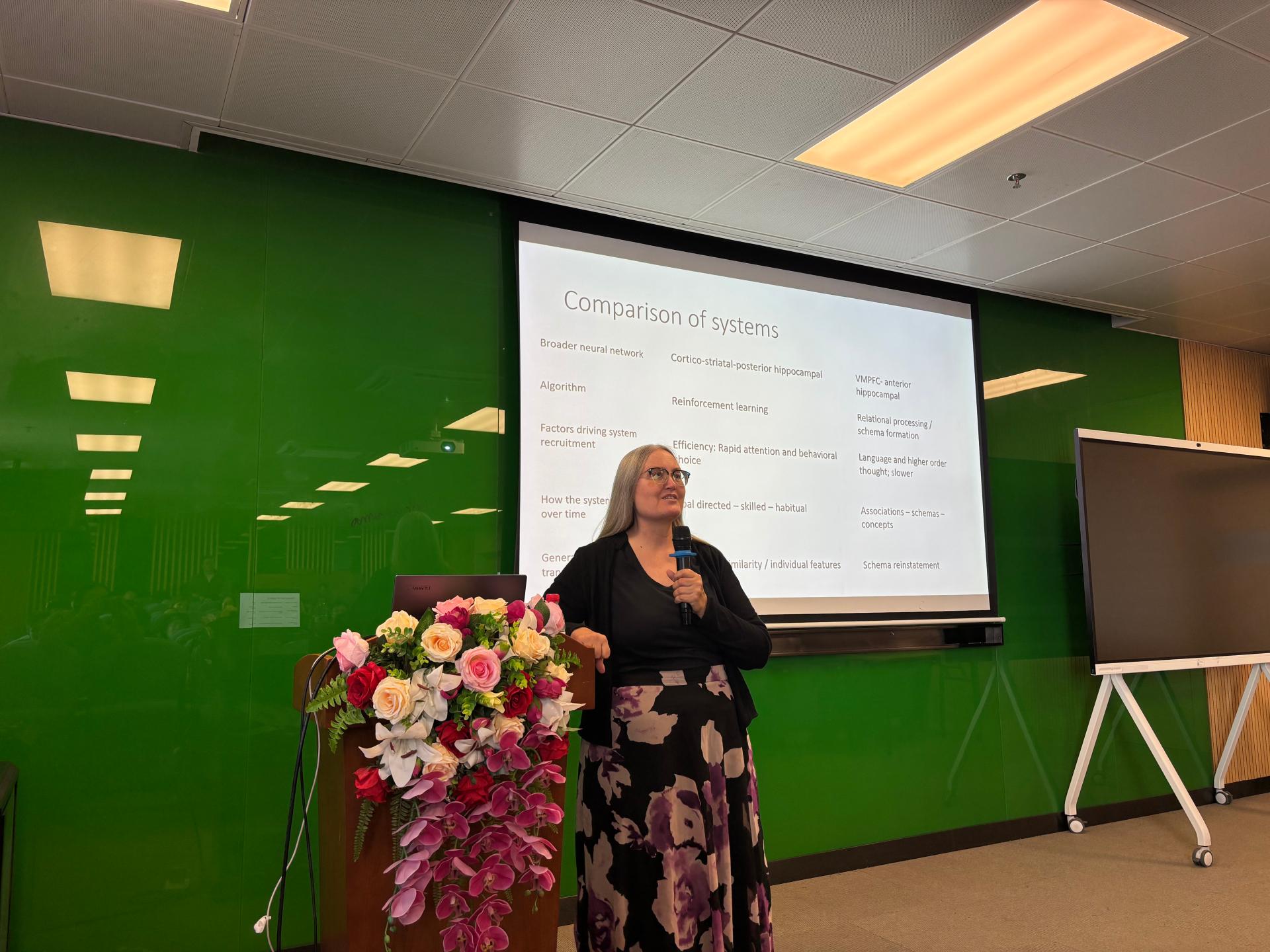ProfessorCarol A. Segerfrom theDepartment of Psychology at Colorado State Universitysystematically explored theneural mechanisms of categorization learningin her lecture. Drawing on recentneuroscientific theories and empirical research, she introduced adual-system theorythat challenges traditional cognitive perspectives. Categorization is not only the foundation ofbehavioral decision-making(e.g., distinguishing between "fruits and rocks") but also plays a crucial role in the construction ofabstract knowledge(e.g., understanding the concepts of "sweet" and "sour").

In the past, scientists believed thatcategorization learningprimarily relied on two independent brain regions: thebasal gangliaand thehippocampus. However, this theory oversimplifies the complexity of the brain. Categorization is not the result ofisolatedbrain regions working independently but rather an outcome ofcoordinated interactions across multiple neural networks.
Professor Seger’s team proposed thatcategorization systems should be classified based on task goals rather than stimulus types. Their framework introduces a more intricate neural network system, including:
TheCortico-striatal-posterior hippocampal system, and
TheAnterior hippocampal-VMPFC-lateral temporal system(VMPFC: ventromedial prefrontal cortex).
These two systems are activated atdifferent stages and for different tasksin categorization learning, providing a more nuanced understanding of how the brain processes and organizes categorical knowledge.
Through a novel empirical study, Professor Carol Seger investigated the synergistic effects of these two systems during skill acquisition. The research employed functional magnetic resonance imaging (fMRI) and multivoxel pattern analysis (MVPA) to track dynamic changes in brain activity across different learning phases. Findings revealed that as training progressed, categorical representations in the motor cortex and intraparietal sulcus (IPS) exhibited progressive enhancement, while the ventromedial prefrontal cortex (VMPFC) played a critical role in higher-order categorical knowledge integration.
Furthermore, Professor Seger elucidated the algorithmic foundations of categorization learning: the cortico-striatal system primarily operates through reinforcement learning mechanisms, whereas the anterior hippocampal-VMPFC system engages in relational learning and schema formation. These systems demonstrate context-dependent recruitment patterns—the cortico-striatal system dominates rapid behavioral selection tasks, while the anterior hippocampal-VMPFC system activates during tasks requiring abstract conceptualization and linguistic processing.
Concluding her presentation, Professor Seger emphasized the complementary nature of these systems in categorization learning. She outlined future research directions, including mapping diverse category structures onto neural system dynamics, and developing task paradigms to selectively modulate system activation.
